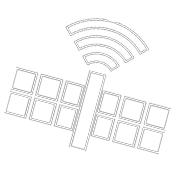Although at the top of the international research in its field
right now (due to a number of funding opportunities which
contributed to the set up of a modern infrastructure and a good
team of scientists), RADO has several weaknesses which, in the
following years, may affect negatively its development:
- Insufficient human resources to operate at its full capacity
(i.e. delays in data delivery due to data processing
procedures, inability to participate to all field campaigns and
networking activities, etc.)
- Gaps in observational data due to the technological limitations
of the instruments (which are not all-weather or continuous
operation), lack of spare parts (e.g. flash lamps for the lidars,
back-up for the sunphotometer head during the calibration period,
pumps for the C-ToF AMS, etc.) due to limited funds and
insufficient human resources (e.g. to operate non-automatic
instruments)
- Insufficient funds to maintain regular contacts with partners
(including from within the national consortium) and be represented
at relevant meetings (e.g. ACTRIS workshops, ISO and ICLAS expert
meetings, EARLINET coordination meetings)
- Weak participation to space-related programs, low degree of
exposure to standardization, especially space standardization
rules
IGACOS recommendations for GEOSS only consider
long-duration integrated observations, focusing on
operational systems providing continuity and reliability.
To preserve its status as an atmospheric remote sensing supersite,
RADO has therefore to ensure a long-duration, continuous operation.
Moreover, it has to continuously improve its measurement techniques
and data handling procedures, to implement quality assurance
programs, and to keep contact with its national and international
partners and stakeholders. As consequence, RADO has to strength
also its capacity to attract funds. CARESSE project intends to make
a step forward: starting from RADO, which basically is a provider
of data, towards a sustainable and autonomous research centre,
mobilizing its own but also network-wide capacities (human
resources, infrastructure, logistics, access to data) in a unique
platform.
|
Strengths
- Top quality, multidisciplinary expertise in: physics,
optical and electronic engineering, mathematics, programming,
biology, chemistry
- State-of-the-art research infrastructure (see Annex), unique in
SE Europe
- Outstanding national and international networking (see State of
the art section)
- Young and in the same time experienced team, well motivated and
competitive (see State of the art section)
- Highly trained personnel, good scientific records
- Good representation in international committees (EARLINET,
ACTRIS), expert and coordination groups (ICLAS, EG-CLIMET, TOPROF),
standardization groups (ISO)
- Access to international high-quality infrastructure,
international and national data bases (EARLINET-
ACTRIS, AERONET, ROLINET, RADO)
- Implemented quality assurance programs, as data provider for
international ground-based networks
- ISO: 9001/2008 certification
- Existing cooperation with the private sector (manufacturers of
research instruments, service providers, software companies,
end-users of remote sensing data) and national administration
- Extended expertise in project management
- Dedicated marketing & publicity office
- Strong links with academia
- A leading position as the most advanced atmospheric remote
sensing in Romania and SE Europe
|
Weaknesses
- Insufficient funding to maintain and develop the existing
infrastructure and human resources
- Lack of multiannual financial planning which leads to
incoherencies in strategic development
- Insufficient human resources to handle non-automatic
instruments, leading to limited participation in international
campaigns
- Insufficient automation of data collection and data processing,
leading to gaps in observational parameters
- Limited direct contact with partners due to the underfunding of
travel for meetings
- Limited access to novel scientific findings due to the
underfunding of travel for conferences and restricted access to
documentation
- Low degree of technological transfer to industry, due to the
specifics of the research (generating highly specialized products
and knowledge, which are not immediately marketable)
- Low degree of co-financing from industry, due to the specifics
of the research (with impact on general social needs, not specific
to a certain economical sector)
- Weak participation to space-related programs, due to the
relatively new domain in Romania
- Low degree of exposure to standardization, especially space
standardization
|
|
Opportunities
- Increasing social interest towards the environmental and
climate change issues, which leads to increase of funding for EO
activities
- Participation to ACTRIS, ITaRS, TOPROF, which may foster new
partnerships and funding opportunities
- Increasing Romanian contributions to ESA programs, which gives
opportunities to approach new research directions and participate
in ESA tenders
- Increasing access to the global market through ICT;
- Reorientation of research priorities according to the national
strategy;
- Acceleration of inter- or multidisciplinary research;
- Transfer of knowledge and know-how from experienced European
research organisations;
- Brain circulation, which may foster the employment of highly
qualified researchers from abroad (e.g. Romanians from abroad,
young scientists from neighbouring countries, etc.)
- Romanian membership to the EU and single market, even in
research (ERA).
- The imminent launch of the HORIZON 2020, with a strong
applicative and innovative component
|
Threats
- At national level, GERD is in constantly decreased (since
2008);
- Brain drain towards more Western EU, USA and Canada which leads
on short and long term on human capital loss
- Strong national and international competition, especially
between different research domains
- Decreased interest from large corporations to grow by R&D
as short term financial priorities are more important than long
term ones
- Limited number of calls for proposal to access funding
- Lack of a program on institutional funding that should cover
basic needs of research units
- Warn out of the technology embedded in the existing research
instruments
- Lack of continuity in the general strategy for research in
Romania
|
